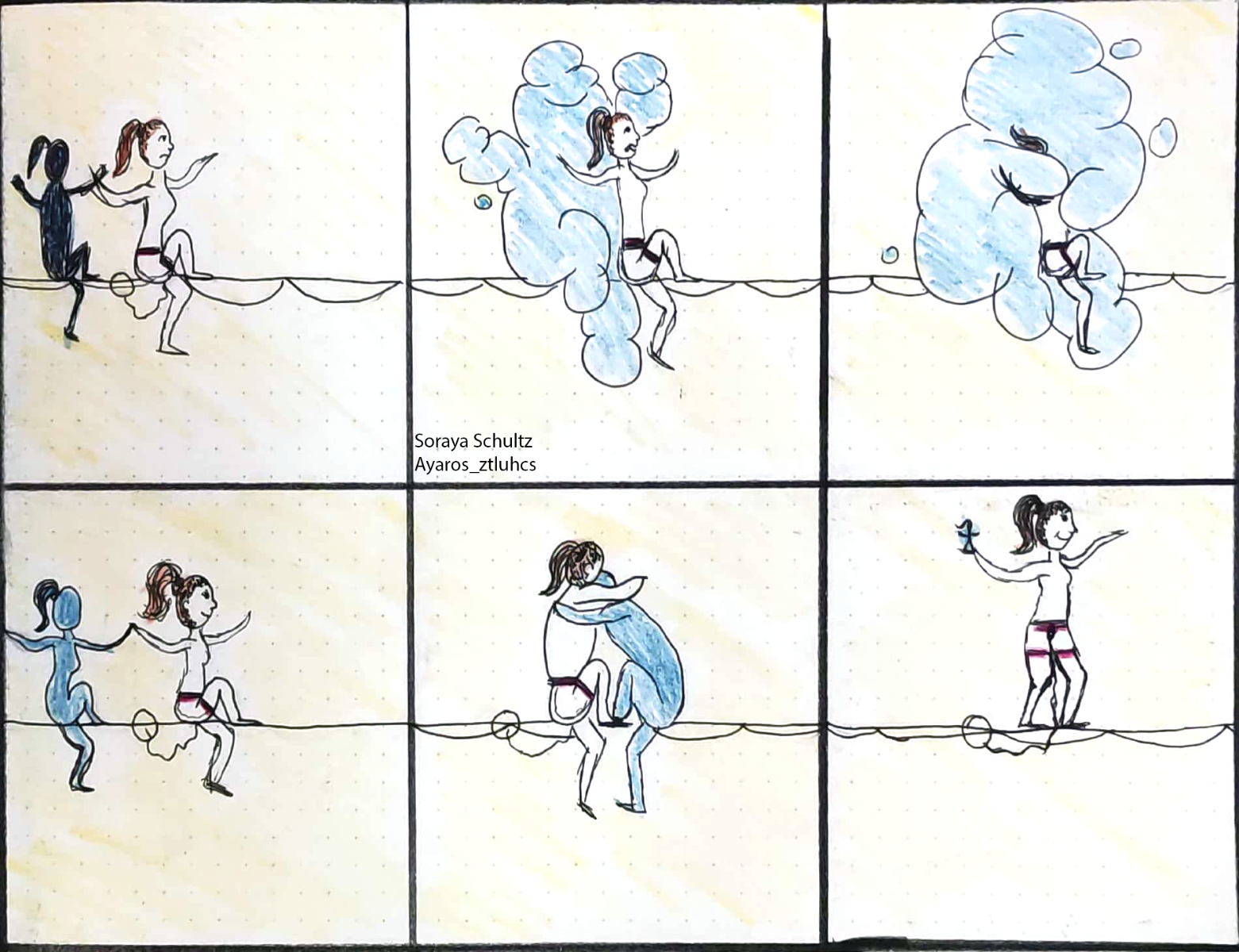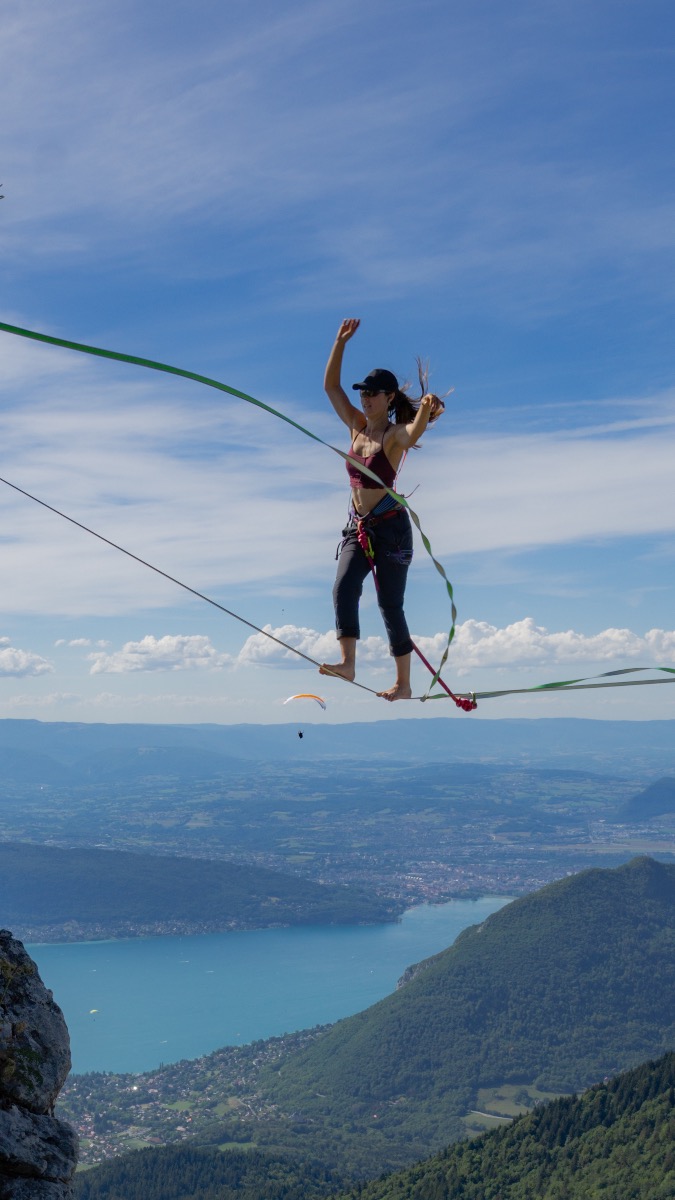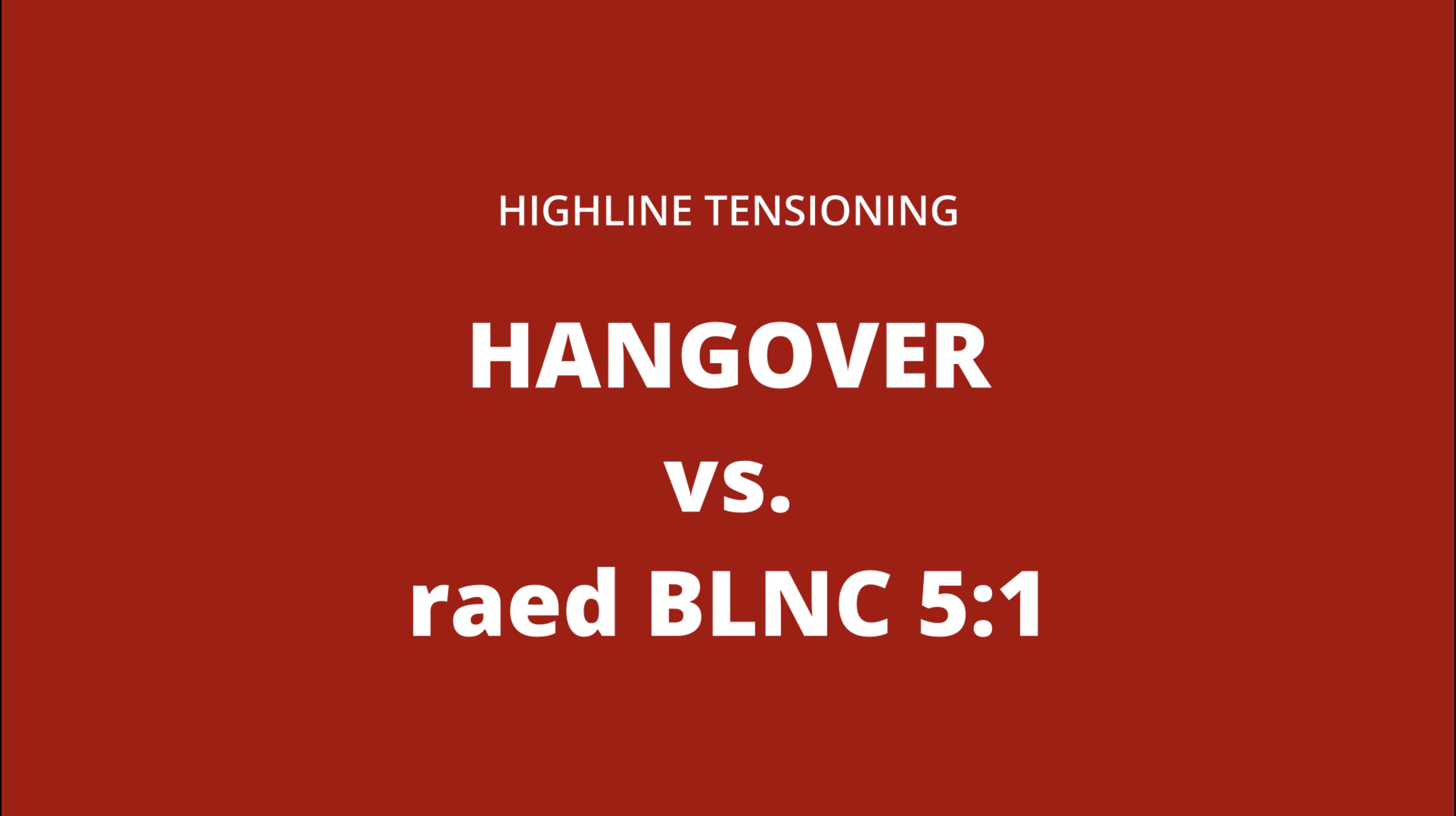Highlining and Fear

Fear always goes together with thoughts
When I speak to people about highlining, they cannot imagine that I am actually afraid of heights. And when I tell them that my fear of heights is the reason I started, their eyes are growing wider and question marks appear above their heads.
As a mindset coach in my professional life, I coach others to overcome their own fears and insecurity and strengthen their psychological flexibility. In other words, I focus on growing mental resilience for individuals to be happy in their daily life and feel more resilient when facing challenges (Covid-19, anyone?).
A mindset is the way you think about yourself, and it has a big impact on how you are living your life, how you deal with challenges, setbacks and learning situations. I believe that sports in general is a way to train your resilience for daily life.
My journey in highlining started with one powerful thought: “if I don’t do it now, when will I?”. That first highline experience was terrifying but from that moment on I thought: “If I can do this, I can do anything”. Those two thoughts became more or less my mantra when I faced scary situations.
Today, I take you on my journey and share with you what helped me to accept my fear of heights.
Why you have to learn to accept the fear
I found out that there are many factors playing a role in why you experience fear on a highline. One thing is clear: fear always goes together with our thoughts. If you don't have any thoughts, there would be no fear. Makes sense, right? While we feel some primal fears on the highline, this makes little sense from a rational perspective.
But mother nature gave us the capability to learn, which is why we are capable of solving the most complex stuff. And because we are complex human beings, it's an illusion to think that you can get rid of fear completely.
Fear is a normal reflex from our brain to survive, just like any other living creature on this planet. See it as a warning mechanism for potential danger. Fear is an essential part of our biology, which will never completely disappear. The famous free solo climber Alex Honnold once said: “I’ve done a lot of thinking about fear. For me the crucial question is not how to climb without fear – that’s impossible – but how to deal with it when it creeps into your nerve endings”. It means you have to learn to accept the fear and learn how you can deal with it.
Let's get some things straight. There is a difference between irrational fear and rational fear. Rational fear should always be taken serious. But when sensing irrational fear, you can question yourself if it’s useful to put all your energy into that sensation.
We should never forget that fear also has a function and it's normal that we feel this way. We are not designed by mother nature to go over that edge and stand up, walk and fall at great height. We are capable of doing so because we are able to learn.

How I got a grip on my fear
There are two parts that helped me to get a grip on my fear; the technical part and the mental part.
The technical part is about learning to understand the gear that I am using. By understanding how the gear works and how to use it safely I became capable of checking other people's rigs, set up my own lines, and make risk assessments. That way I can conclude whether a rig is safe enough to my standards. This helped me to get confidence in the materials, in my own rigging skills, but also in my partners or other people’s rigging skills.
The mental part is about exploring what thoughts are giving me the fear and what kind of signals my body is giving. Our bodies always give us signals. Never ignore the signals of the body, because ignoring it is like trying to keep a ball under water. It drains away your energy and you end up in being disappointed in yourself or feeling frustrated because it didn’t work out as you hoped.

Comfort-zone, stretch-zone and stress-zone
Imagine two circles. In the middle is the comfort-zone and around it is the stress-zone. In the comfort-zone, you feel comfortable and confident in what you’re doing. You are capable of enjoying the ride, but it also means you’re not really learning because you’re not challenged sufficiently. Then there is the stress-zone. In the stress-zone you are in survival mode. When merely attempting to survive, you don't learn anything anymore. The basic instinct responses that often happen in the stress-zone are: fight, fright or flight. It's also called the reptile brain. You can imagine that you have zero brain capacity to learn new skills here.
To learn something new, it’s good to explore your stretch-zone. This is the zone that starts at the end of your comfort-zone and ends before the stress-zone. In this stretch-zone, you learn the most because you’re getting triggered to do your best. You might be feeling a bit tensioned, but you still feel in control. You are focused on the task. At the start this stretch-zone might be small for you, both in terms of comfort-range and time that you’re able to spend in the stretch-zone. Over time, your stretch-zone will expand. You will experience the feeling of control and focus in a larger range of situations, and you’ll be able to spend more time in the stretch-zone before you’ve had enough. This is where learning and progress takes place!
When you push yourself regularly in the stress-zone, you will start to experience more negative feelings and thoughts over time. This will result in experiencing less progress, more pressure, more fear and less fun.
Stress helps us to be alert and focused. Experiencing a little bit of stress is very normal and should not be confused with fear. This kind of stress helps you to achieve your goals in highlining.

The power of thoughts
Nobody ever became better from talking down at themselves. I never became better in highlining when I was fighting my own thoughts, neither did I have a lot of joy when doing that. Thoughts such as ‘I can do more, I can be better, I am stronger than that’ are not very beneficial.
Stop the fight and start to accept. Accepting doesn't mean giving up. It means you accept the fact that you are thinking like that or feeling like that. Don't push it away (like keeping that ball under water). Don't think anything about it. Just let it be.
You can have these feelings and thoughts, it's okay as it is. Just breathe and take a moment for yourself. The moment you learn to simply allow such thoughts, the more they will lose their power.
I hope this article will help you to understand your mind a bit better without wanting to solve "the problem". No matter how hard it is, learn to appreciate the journey towards the goal, because it gives you so many tools to be more resilient in you daily life.
And hopefully the next time when you cannot find the flow, experience negative thoughts or emotions and feel to much pressure, remember: just sit down on the line, breathe and admire all the beauty around you.
If you like what you’re reading or if you have a question for me, you can find me on Instagram: @ayaros_ztluhcs. I am more than happy to talk about these issues with everyone!


 DEU
DEU









Validate your login
Sign In
Create New Account